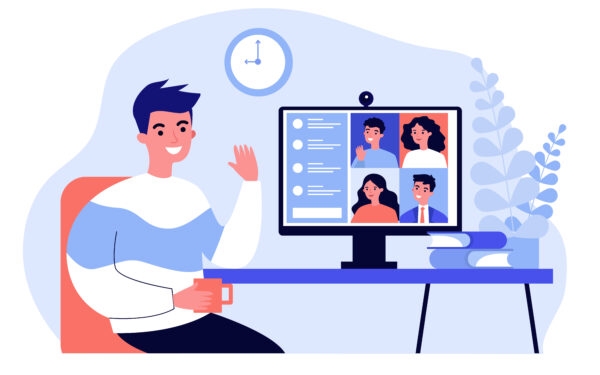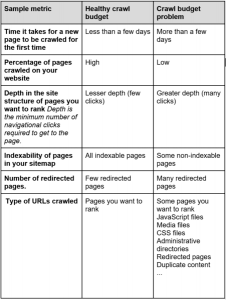
In 2020 we are long past the beginning of the digital age. While technology is still growing and changing, we adapt more quickly to the convenience of the new tools being offered. The novel coronavirus pandemic (COVID-19) and the social distancing that comes with it is an unimaginable challenge, but fortunately, numerous B2B organizations offer digital tools to help us live and do our jobs virtually.
Using digital platforms is commonplace in our daily lives and talking about it might seem banal at this point; nevertheless, now is the time to use digital to its full advantage and think outside the digital box. Examine your current marketing plan and see how you can more dynamically and strategically use digital tactics. Whichever tactics you use, don’t forget to analyze your results. You want to make sure your content is resonating with your target audience and that you can reassess your next steps.
Before you move forward, ensure you follow the 4 Rs of compassion communication and flow compassion through all of your efforts in the next few weeks. Keep in mind; empathy should not be forgotten outside of times of crisis. Learn how to use and learn from digital empathy in all of your communications.
1. Virtual Conferencing and Communication
It’s probably safe to say everyone has participated in a video or web conference call at least once and for many, it is a weekly, sometimes daily, routine. No one has ever said the solution to something is more meetings; however, keeping connected with your team, customers and prospects should be a high priority. Customers, current and future, appreciate easily accessible channels where they can ask questions and get answers, from the convenience of where they reside. While some people prefer to meet in person, these platforms offer a suitable alternative to keep business moving. Remind yourself and your team; almost everyone is currently remote and working. With video conferencing, the lack of in person meetings should not impede any sales or marketing conversations and deals.
Many companies have a standard conferencing and chat provider. In some organizations, not all departments have access to the same tools, check with your Operations, IT or Human Resources department if you are not sure which provider you use and to get a profile. Not all companies have a standard, especially in start-ups and smaller businesses. If you need a service provider, Zoom is one leading video conferencing platform. They are also a great example of how a brand can take positive steps to keep their audiences informed while still showcasing their solutions. Microsoft Teams and Skype are another leading conferencing platform offering resources to help.
2. Webinars
Canceled in-person events, conferences and prospect meetings do not mean you have to cancel your presentation or promotion plans. Webinars are a great way to promote your service, offering and thought leadership in a more personal way, while ensuring your audience is participating in a safe location. They are a great way to be a virtual classroom or showroom for your business. Audiences right now want to keep working, learning, connecting and growing, luckily webinars help them access all four.
Review what has been canceled, were you going to present at a tradeshow, conference or another type of leadership event? Are you able to get a list of who signed-up for that presentation? If not, utilize your CRM and internal lists. Don’t let a cancellation stop you, move forward and schedule your own presentation. If you are able to tie in crisis strategy, or how your product helps during times like these, put that messaging first. Don’t forget to record these events and use them for ongoing lead generation on your website or in future marketing campaigns.
3. Social Media
Like your content calendar, you will need to strategically update your social media calendar. If you are saying social media is not for B2B, learn why your B2B should be using social media. If you know you should be using social media more or need a best practices refresher, review how to effectively use social media for your B2B. No matter which platforms you use, make sure you engage with your audience. Don’t post and run. Communication and connection are more important than ever.
Social media is an amazing medium for how many ways it can be used. You can use social media to do two essential things: establish yourself, and your company, as a leader and promote your corporate culture. Each platform offers a different opportunity and audience reach. Don’t make the mistake of crafting one message and posting it over all mediums. Each platform should have slightly revised content of each message to match the tone and audience.
The four platforms that still see the most success are LinkedIn, Instagram, Twitter and Facebook. LinkedIn is your primary B2B audience. Your tone should be more professional and the content you share should address pain points and solutions regarding business and operations during the COVID crisis. Twitter is another great B2B resource. Search for trending hashtags and post more succinct and straightforward messages and relevant content.
Facebook is a good platform to share the more human-interest part of your company. This is a great place to post news about ways your product or service is or has helped people and the community. It’s also a great place to post internal photos of your team, perhaps at the last in person team gathering. Instagram is a purely visual way to represent your company but that doesn’t mean it isn’t any less valuable. Instagram has seen a huge rise in ad placement. There are a billion users on Instagram each month and 33% of B2B businesses now have a presence on there. Even more exciting is that 83% of users say they find new businesses through the Instagram app. Get creative, use the Instagram stories section; 500 million users take advantage of stories each day.
4. Email
Email is a staple in any marketing plan, but in a sea of mass-produced e-communication, how do you stand out? One key is to use the digital empathy strategy and create an empathetic email. One way to begin to create empathy is through connection and personalization. Personalized emails have 6x higher transaction rate.
Messaging that you use in the next few weeks and through the COVID-19 crisis should be focused on concern rather than a sales pitch. That does not mean you have to scrap your marketing plans, simply rewrite your content to reflect current circumstances. Learn how to adjust your marketing personas to craft new messaging. Instead of a hard sell, sympathize with your audience, address their pain points and offer help through your product or service. Remember, the first email they receive from you should be compassion based, if it is sales oriented it could turn-off your customers and prospects.
5. Web
With all the applications and programs and platforms and mediums in our daily lives, sometimes the website can get overlooked as the immediate solution. Something as simple as adding a crisis communication page, an FAQ page, a pop-up or banner that addresses the situation or ensuring you have an easy to find contact form can put customers at ease.
This is a very confusing and scary time for most people, professionally and personally. It can seem overwhelming to move forward in such an uncertain time. If you are not sure where to start, Marketing Adjustments for Turbulent Times is a great resource to help navigate these uncharted times, keep your team and business afloat and have a vision to more forward. To quote business leader Adam Neuman, “As the world becomes a more digital place, we cannot forget about the human connection.” This has never been more relevant than now. Use digital wisely; keep it personal; keep it empathetic.
Business & Finance Articles on Business 2 Community
(71)







